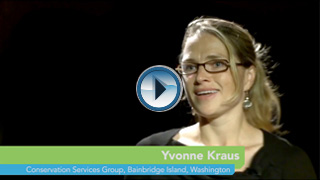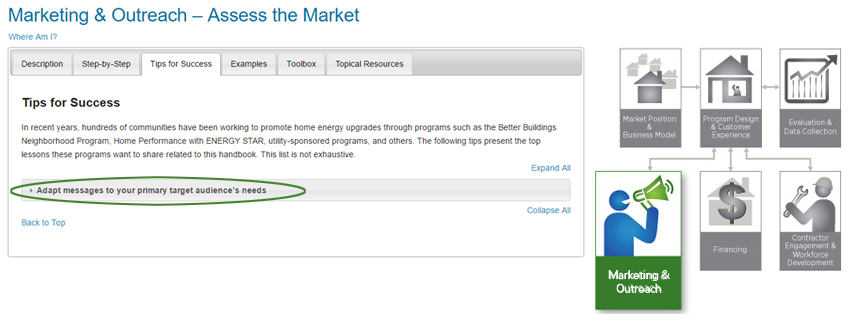
Residential energy efficiency programs have found their marketing efforts are more successful when they craft their messaging to resonate with specific customer needs. A comprehensive evaluation of more than 140 programs across the United States found that programs had greater success when they identified and segmented primary target audiences within their target area and tailored outreach to those populations.
Market research can help programs identify, segment, and characterize audiences to better understand their needs. Consider prioritizing audiences based on parameters such as demographics, values, housing type, fuel source, potential for savings, common problems with homes, property ownership structure, or remodeling opportunities. Following are a few approaches that programs across the country have taken to segment their target audiences and adapt messaging to them to increase demand for home energy upgrades.
Target Underserved Homes
In Seattle, Washington, Community Power Works purchased a mailing list that identified all owners of oil-heated homes, who were ineligible for city-sponsored electricity and gas utility rebates. Given the lower efficiency and high cost of heating oil, the program focused its messages on the potential dollar savings that could be achieved by replacing old oil heaters. More than 700 Community Power Works customers who received the mailing subsequently signed up for upgrades between April and August 2012. In the 11 months prior to the first mailing, only 20% of Community Power Works’ upgrade projects involved oil-heated homes, and during the six months following the mailing, 50% of the homes were oil-heated. Among those homes, nearly 75% switched from oil heating to high-efficiency electric heating or high-efficiency electric heat pumps.
Build Messaging Around Community Interests 
The RePower program in Washington state customized its marketing and outreach strategies to reach the environmentally conscious residents of Bainbridge Island, Washington, and Bremerton, Washington, a neighboring community with a lower income demographic. In Bainbridge, messaging focused on environmental stewardship, and an Island Energy Dashboard displayed real-time energy use in public spaces, such as local businesses and commuter ferries. Messaging geared toward Bremerton residents, meanwhile, emphasized job creation and reduced utility bills. Each location had its own community-specific website, color scheme, print advertising, online promotions, and case studies highlighting local energy champions to drive demand for residential energy upgrades.
Strategize Using Market Segmentation 
The ShopSmart with JEA program in Jacksonville, Florida, purchased Neilson PRIZM lifestyle segmentation data, which included demographic, consumer behavior, and geographic information, to identify, understand, and reach potential home energy upgrade customers. The data divided consumers into 66 demographically and behaviorally distinct segments. Through this market analysis, ShopSmart with JEA discovered that out of those segments, one of the most promising demographics to market its program offerings was older people without children. ShopSmart was able to use this information to market the program specifically to this demographic, as well as identify and target new demographics that had not been active in the program previously.
Tell Me More
Discover more lessons learned on tailoring messaging to specific audience segments by visiting the Better Buildings Residential Program Solution Center Marketing & Outreach—Assess the Market handbook for step-by-step guidance and program examples.
Haven’t used the Residential Solution Center before? Get started here!
